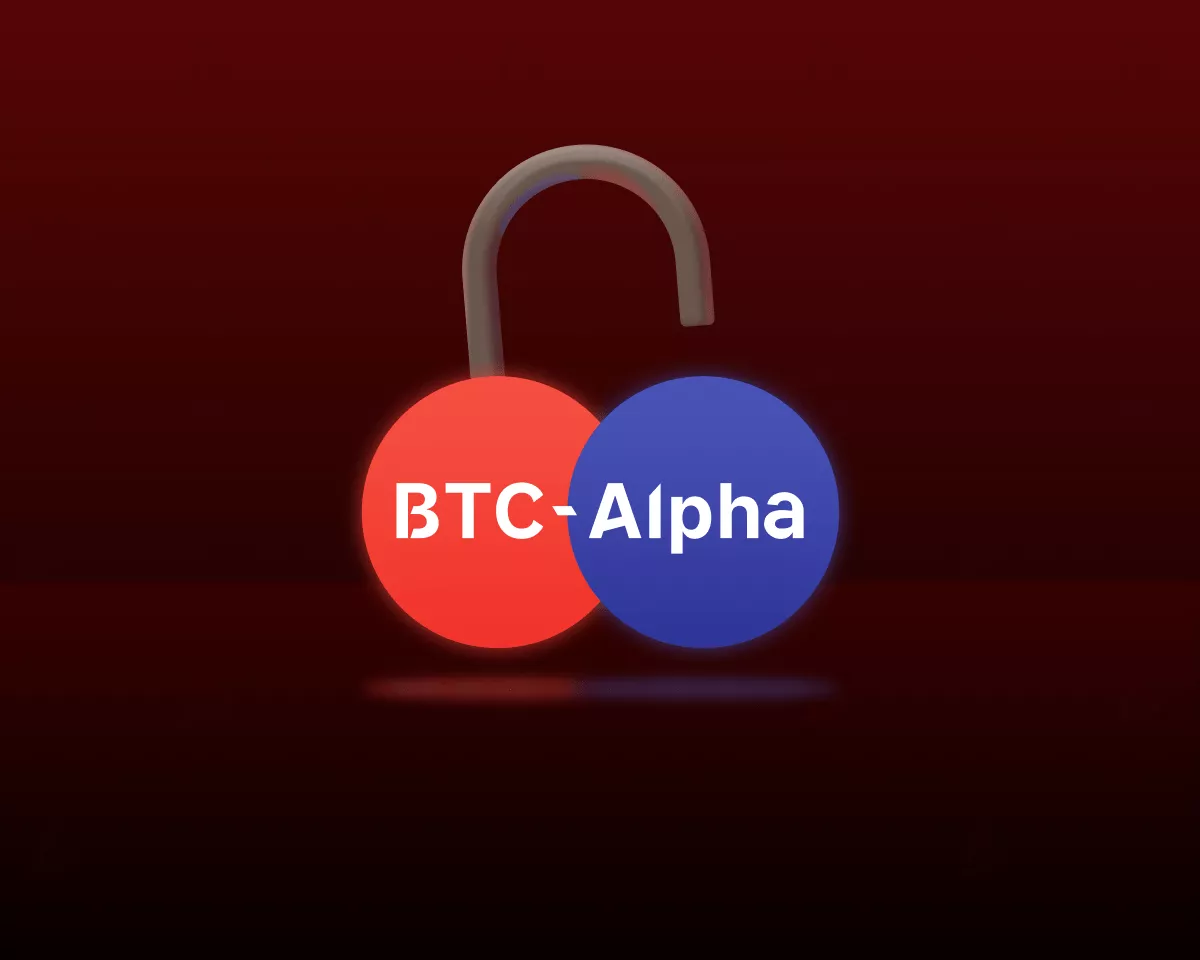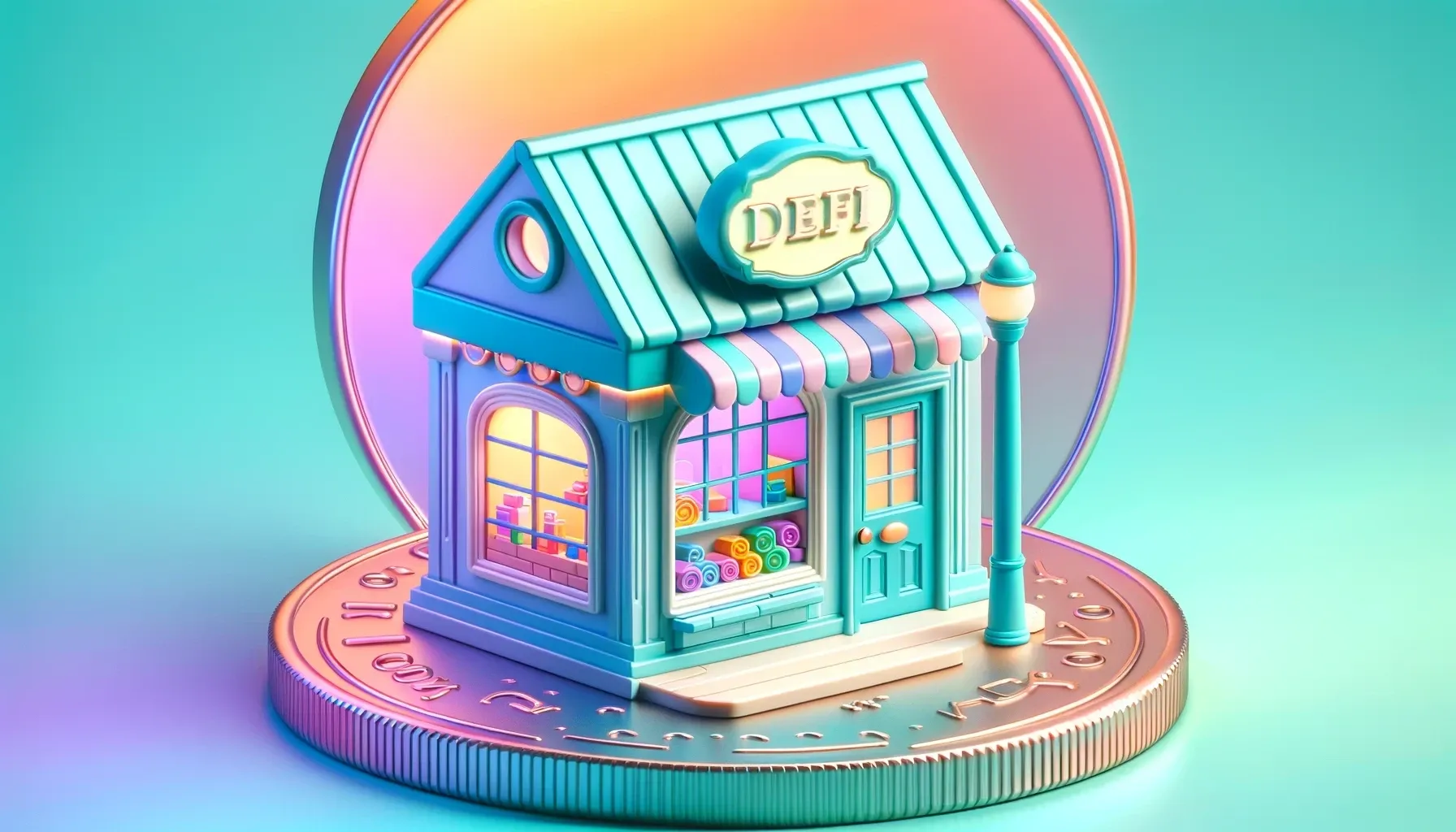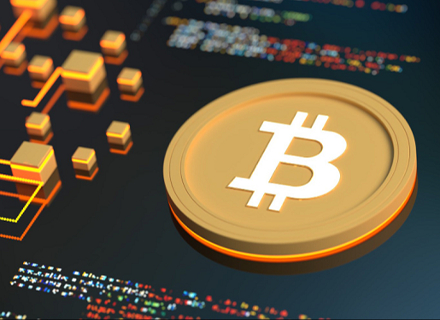- Crypto valuations pulled back in April 2024 as the macro outlook turned less favorable. In particular, strong growth and high inflation in the United States reduced the probability of Federal Reserve rate cuts this year.
- At the same time, industry trends remained broadly favorable. Highlights included the Bitcoin halving, rising activity throughout the Ethereum ecosystem, and potential progress on stablecoin legislation in the US.
- Grayscale Research believes token valuations can move higher again through the remainder of 2024, as long as the macro markets backdrop remains broadly supportive.
After rising for seven consecutive months, Bitcoin’s price declined 15% in April 2024, and total crypto market capitalization edged lower.[1] The month included a variety of fundamental positives—ranging from the Bitcoin halving to progress on stablecoin legislation—but the macro outlook turned less favorable, weighing on all markets.
On a risk-adjusted basis (i.e., accounting for each asset’s volatility), returns for Bitcoin and Ether were in the middle of the range among traditional assets (Exhibit 1). Gold and oil prices gained during the month, likely in part reflecting the increase in tensions in the Middle East, while most other major asset classes declined. Long-maturity Treasury bonds performed especially poorly as markets discounted higher inflation and a higher path for real (inflation-adjusted) interest rates. Global equity indexes declined, and volatility in both equity and bond markets increased.
Exhibit 1: Worsening macro backdrop weighed on many assets in April

Paradoxically, the central reason for this weakness appeared to be strong nominal growth in the United States, which dimmed prospects for Federal Reserve rate cuts. Early in the month, the Department of Labor (DoL) reported that payroll employment increased by about 300,000 in March and averaged about 275,000 per month during Q1. The following week, the DoL reported that the “core” Consumer Price Index (CPI)[2] rose at an annualized rate of more than 4% for a third consecutive month. Public comments from Federal Reserve officials following that strong data appeared to signal reduced prospects for interest rate cuts. At the end of March, markets had discounted about three 25 basis point (bp) rate cuts by the end of 2024; by the end of April, this had fallen to just over one 25bp rate cut (Exhibit 2). As Bitcoin is an alternative money system that competes with the US Dollar, over the last month, higher real interest rates have likely supported the value of the Dollar and weighed on the price of Bitcoin.
Exhibit 2: Markets now see relatively few Fed rate cuts

That being said, news over the last month also highlighted a few of the macro trends that could support demand for Bitcoin over time. In particular, media reports suggested that a second Trump administration could: attempt to weaken Federal Reserve independence (Wall Street Journal), deliberately devalue the Dollar (Politico), and penalize other nations for seeking to do more bilateral trade in non-Dollar currencies (Bloomberg). (We discussed each of these risks in an earlier report on the macro policy issues at stake in the upcoming election.) Although the campaigns are still in their early stages, the latest reporting highlights uncertainty that the election could bring to the medium-term outlook for the US Dollar, and by extension the medium-term outlook for Bitcoin.
Despite the more challenging macro markets backdrop, there were a variety of positive developments within crypto markets during April. Most importantly, the Bitcoin halving on April 20 reduced the network’s rate of new issuance from about 900 coins per day previously to about 450 coins per day. After the halving, the network’s inflation rate—the annualized rate of new issuance relative to existing supply—fell from about 1.7% to about 0.8%. Bitcoin’s inflation rate was comparable to gold supply inflation prior to the halving, but is now meaningfully lower (Exhibit 3). In Dollar terms, the reduction in daily issuance amounts to a cut in annual supply growth of about $10bn at the current price of Bitcoin.[3]
Exhibit 3: Bitcoin’s inflation rate now lower than gold

Bitcoin transaction fees surged on the day of the halving due to the simultaneous introduction of Runes, a new fungible token standard for the Bitcoin network, created by the same developer who introduced Ordinals. That day, miners collected approximately 1,200 BTC in fees, a dramatic increase from the prior daily average of around 70 BTC. Over the following days, daily fees settled around 250 BTC and 450 BTC, before tapering lower late in the month (Exhibit 4). On the one hand, high fees can make small value transactions on the Bitcoin network prohibitively expensive, potentially weakening its eventual use as a medium of exchange (e.g., individual transaction fees averaged $124 on the day of the halving).[4] On the other hand, high fees support Bitcoin miner revenue, and therefore contribute to network security. Although the outlook is uncertain, our working assumption is that Bitcoin transaction fees will rise over the medium term—supporting miner revenue—and that scaling solutions will be required for cost-effective Bitcoin payments and other network usage.
Exhibit 4: Bitcoin fees surged around the halving

Ether again underperformed Bitcoin during the month, possibly due to lower perceived odds of spot ETF approval in the US market. According to the decentralized prediction platform Polymarket, the probability of approval by the end of May is just 12%, down from 21% at the end of March and roughly 75% in early January. At the same time, on-chain activity within the Ethereum ecosystem continued to rise: daily active users reached 1.3 million in April, led by growth in Base and Arbitrum (Exhibit 5). Despite the recent underperformance in Ether token returns, we continue to have a positive outlook for the second largest public blockchain by market capitalization, and think it will benefit from the tokenization trend in particular.
Exhibit 5: Ethereum ecosystem showing continued growth

Encouragingly, there were several items of positive news in regards to stablecoins this month. On April 17, Senators Lummis and Gillibrand proposed a bipartisan bill outlining a framework for stablecoin legislation. The proposal involved a requirement for stablecoin issuers to hold one-to-one reserves, consumer safeguards such as FDIC involvement in the event of failures, and an outright ban on algorithmic stablecoins.[5] In our view, US regulatory clarity on the status of stablecoins on public blockchains would be an important step forward for payments use cases. In addition to progress on legislation, the payments processing firm Stripe announced that it would allow its customers to send USDC stablecoin payments on Ethereum, Solana, and Polygon—another positive sign for the development of these networks.[6]
Total stablecoin market capitalization has increased significantly in 2024, growing from $130bn in January to $160bn today (23% in just five months). Notably, in early 2023, Tether (USDT) pulled away as the dominant stablecoin option and currently accounts for 69% of the total stablecoin market cap (Exhibit 6). Although Tether widened its lead in 2023, US-centric Circle’s USDC has shown impressive growth in 2024 thus far, increasing its market cap by 36% compared to Tether’s 20%.
Exhibit 6: Continued growth in stablecoin market capitalization

Both Bitcoin and Ethereum outperformed the FTSE Grayscale Crypto Sector Indexes, which incorporate an additional 243 tokens (or “altcoins”) across the five market segments (Exhibit 7). The best performing market segment during April was the Currencies Crypto Sector—largely due to Bitcoin’s comparatively steady price—and the worst performing was the Consumer & Culture Crypto Sector. Weakness in the latter category reflected a retreat in memecoins following strong gains for that subsector in March.
Exhibit 7: Weakness across all five Crypto Sectors in April

For the most part, the pullback appeared to reflect a broad decline in market sentiment, but there were a handful of thematic trends as well. For example, valuations for several decentralized exchange (DEX) tokens had poor risk-adjusted returns. Another notable underperformer was Worldcoin (WLD), which fell 45% in April. Although the protocol announced it is building an Ethereum Layer 2 chain[7], and reporting indicated it is exploring a partnership with OpenAi[8], Worldcoin also said it would increase token supply through new private sales.[9]
In more positive developments, Toncoin (TON) surpassed Cardano (ADA) to become the seventh largest asset in Crypto Sectors.[10] The project announced a further integration with messaging platform Telegram as well as a variety of community and developer incentives.[11] Markets have also focused on SocialFi—decentralized social media applications—over the last 30 days. The interest is likely linked to FriendTech, a platform that enables creators to generate revenue from online communities. On FriendTech, users can trade 'keys' connected to Twitter accounts, granting entry to exclusive chat rooms. Data from analytics firm Kaito shows that FriendTech reached its highest popularity in September 2023.
In late March we argued that Bitcoin was in the “fifth inning” of its current bull market cycle. To stick with the baseball analogy, we may now be at the seventh-inning stretch: valuations have pulled back, inflows into the US-listed spot Bitcoin ETFs have slowed, and measures of speculative trader positioning (e.g., perpetual futures funding rates) have declined. In light of the shift in the outlook for Fed monetary policy, a pause in the rally seems appropriate—higher real interest rates are a fundamental negative for Bitcoin.
Yet, broadly speaking, the macro outlook still seems supportive: the US economy is on track for a soft landing, Fed officials are signaling that rate cuts will eventually be appropriate, and the November elections seem unlikely to result in more fiscal discipline. Moreover, measures of Bitcoin’s valuation, like the MVRV ratio[12], are well below the extremes that marked prior cyclical tops (Exhibit 8). As long as the macro outlook remains broadly unchanged from here, Grayscale Research believes that Bitcoin’s price and total crypto market capitalization can move higher again through the balance of the year.
Exhibit 8: Bitcoin valuation signals below prior extremes 
[1] Source: Artemis; data as of April 30, 2024.
[2] The “core” CPI excludes volatile food and energy prices.
[3] 60,000 as of April 30, 2024.
[4] Source: Coin Metrics.
[9] Source: CoinTelegraph
[10] Crypto Sectors excludes stablecoins. Including USDT and USDC, Toncoin would be the ninth largest crypto asset.
[11] Source: CoinTelegraph
[12] Market Value to Realized Value (MVRV) is the ratio of market capitalization to “realized” capitalization. In contrast to market cap, realized cap values each Bitcoin at the time it was last moved on-chain.


















